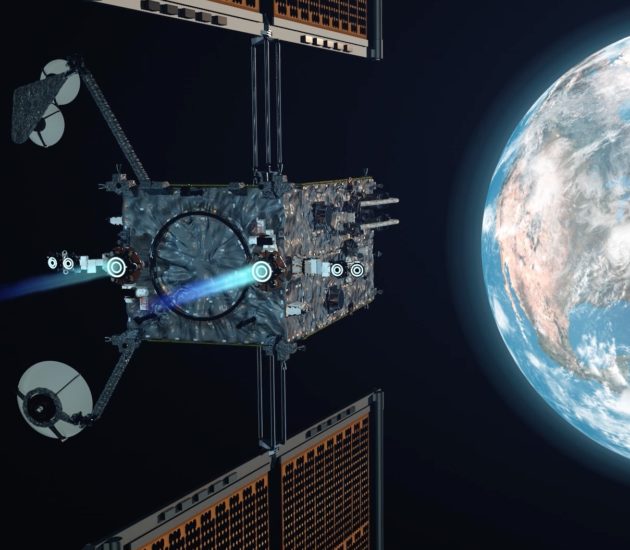NASA has decided to include the Lunar Orbiting Platform-Gateway in its architecture for returning to the Moon in 2024. Ultimately to consist of several modules, the first module must be the one that keeps everything in the correct orbit. This module is called the Power and Propulsion Element (PPE). Maxar Technologies has been chosen to build that element, shown here in a Maxar artist’s conception.
https://www.geekwire.com/2019/nasa-says-maxar-will-build-first-big-piece-gateway-space-outpost-lunar-orbit/
The starting point will be the Maxar (formerly SSL) 1300 bus, a high-heritage geosynchronous satellite with over 90 currently flying. A 1300 bus has a mass of a couple of tons or more, and the PPE will be about 5 tons when filled with propellant. It will need a lot, because it has to boost itself from low Earth orbit to the near-lunar orbit of the LOP-G.
From a space robotics standpoint, the PPE won’t be equipped with any robot arms. Ultimately the LOP-G will have some, produced in Canada. But PPE represents the highest power electric propulsion satellite ever developed. It will have 50 kilowatts of electrical power, whereas a typical GEO communications satellite has 25 kilowatts or less. Having all that electrical power is exciting, because a future robotic space tug could use it to provide massive orbit adjustments. For example, a tug moving satellites from LEO to GEO could save its owner a lot in propulsion system costs.


Recent Comments